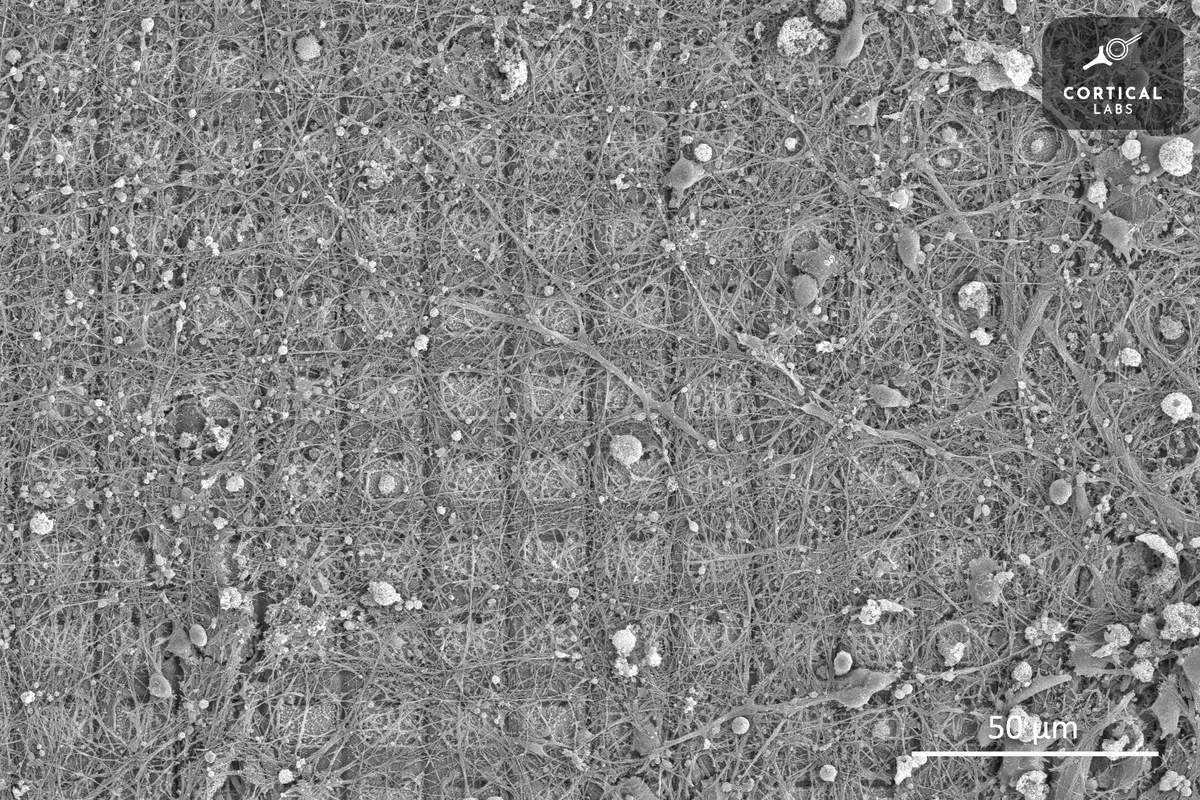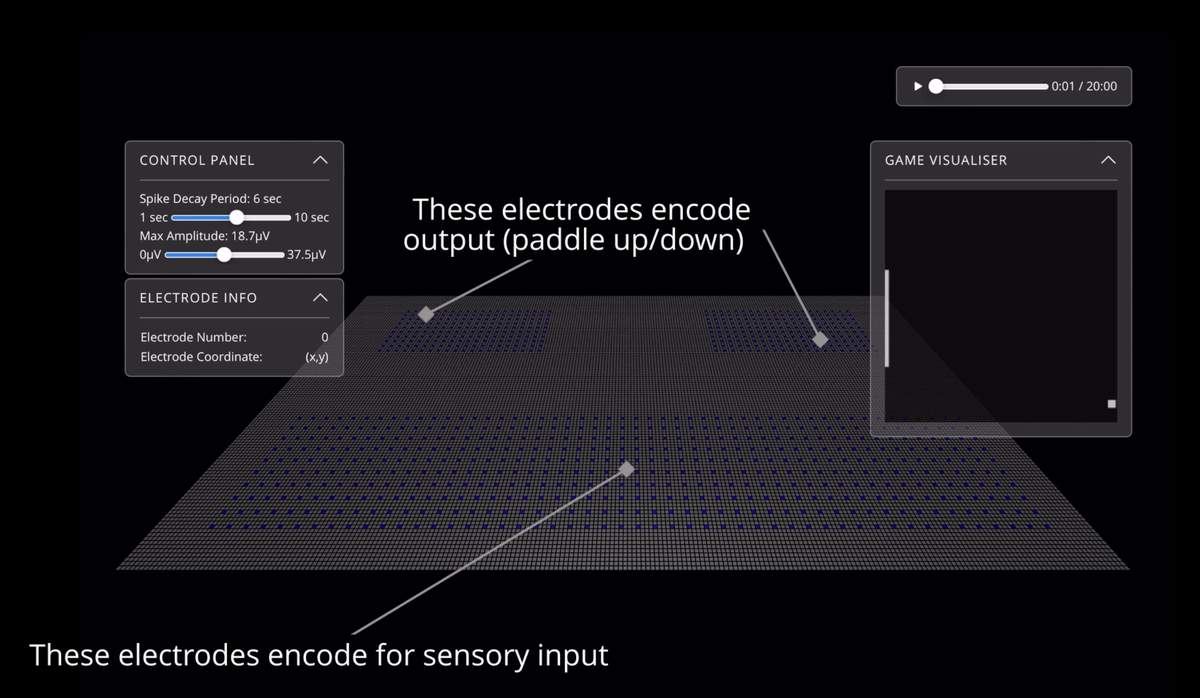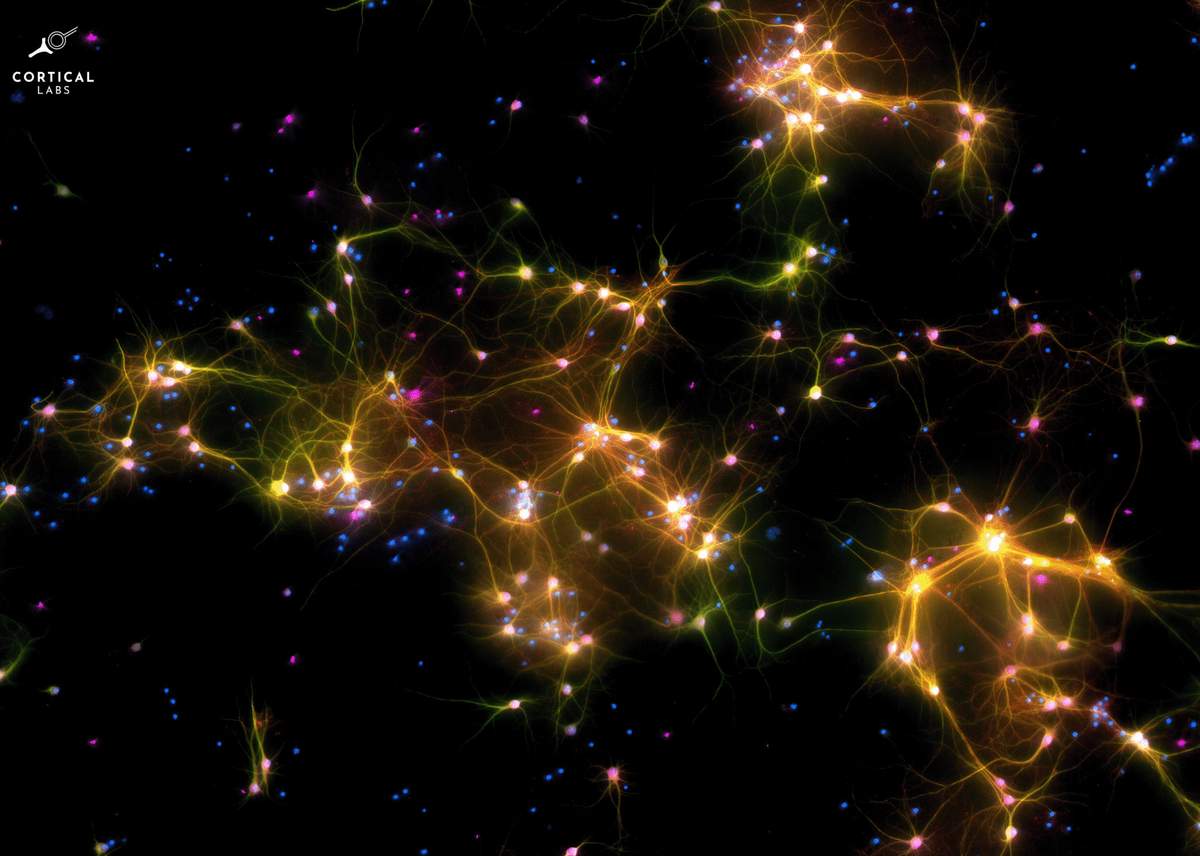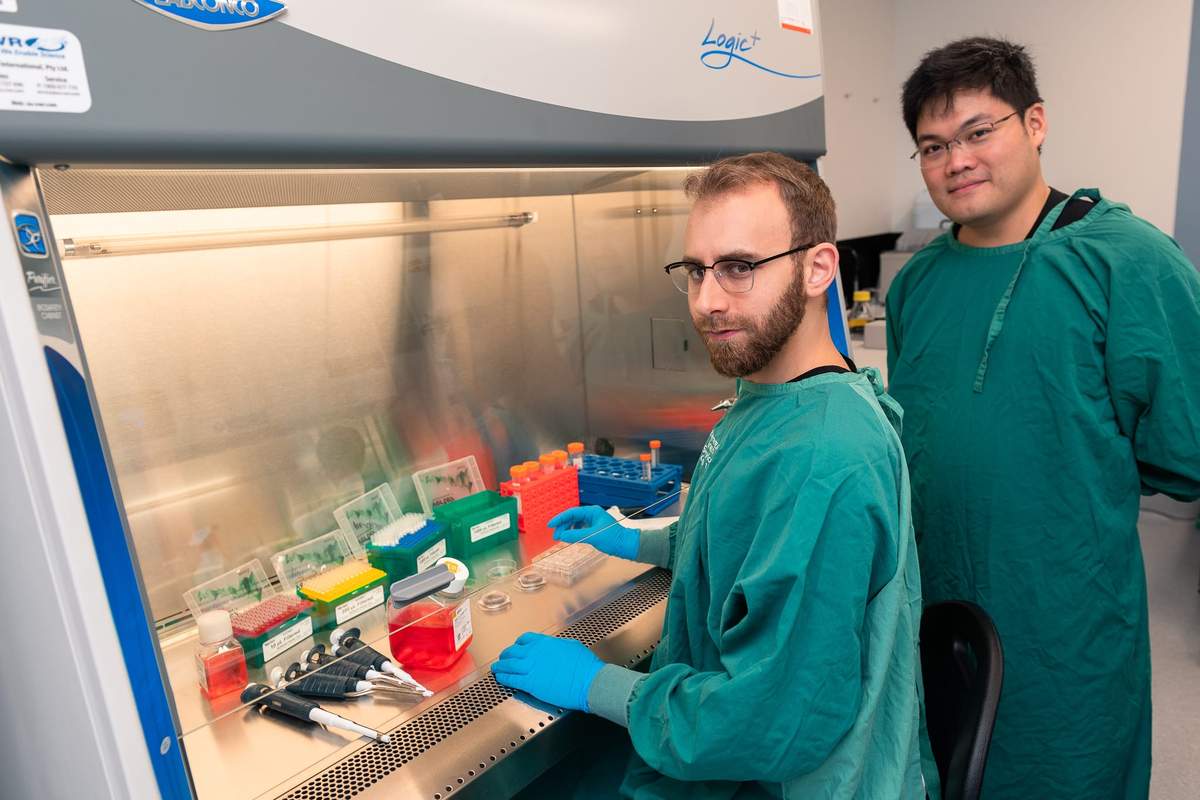Researchers in Australia have shown that human nerve cells in a dish can form a “brain” that can learn to play a simple video game. The research could help scientists understand the brain better. It could also lead to new kinds of computers.
Growing Cells in a Lab
Cells are the basic building block for living things. For decades, scientists have been using cells from humans and other animals for experiments. These living cells can be kept alive and grown in small dishes in a laboratory.
Neurons, or nerve cells, are special cells that make up much of the brain. In the brain, neurons send small electrical signals to each other. This is the main way our brains send and receive information to and from the rest of our bodies. When nerve cells are grown in a dish, they automatically form connections with each other.

(Source: Cortical Labs.)
Researchers at Cortical Labs in Australia wanted to see if they could use nerve cells in a dish to control a simple video game. It was an unusual idea. Scientists had measured the activity of neurons in a dish before. But they hadn’t tried to send information to these neurons and get a reaction back.
To communicate with the neurons in the dish, the scientists grew nerve cells over a small electronic chip. The chip had lots of “electrodes”, where electrical signals could be sent to – or read from – the nerve cells. The researchers called their project “DishBrain”.

(Source: Screenshot, via Cortical Labs.)
The game the scientists chose was a simple version of “Pong”. Pong was an early computer game that was a little like ping-pong. A “ball” bounces around the screen, and players have to move a “paddle” up or down to keep the ball from bouncing off the side of the screen.
Here’s how it worked: A computer used electrical signals to send DishBrain information about where the ball was, and how it was moving. DishBrain’s neurons would react in some way, and that information would be sent back to the computer.
But why would a dish of nerve cells want to learn to play Pong? The researchers couldn’t reward it with food like you might with a dog or a monkey. The scientists decided to test the idea that neurons want to correctly predict what’s going on around them. The reward would be giving DishBrain something predictable.

(Source: Cortical Labs.)
So DishBrain got a nice pattern of electrical activity every time it hit the ball with the paddle. But when the ball flew off the screen, DishBrain got noisy electrical signals with no pattern.
It may be surprising, but DishBrain learned how to play Pong in about five minutes. With more time, it was able to keep the ball on screen for longer and longer. Though DishBrain never got really good at Pong, it played pretty well for some neurons in a dish.
In all, DishBrain had about 800,000 nerve cells. That may sound like a lot, but it’s fewer neurons than a cockroach has. The results suggest that even small groups of neurons have impressive power to organize and learn quickly – even in unusual conditions.

(Source: Cortical Labs.)
The Cortical Labs team thinks the experiment has a lot to teach scientists. Right now, there’s a lot of effort going into Artificial Intelligence (AI). Many AI programs are based on the way scientists believe brains work, which may not be accurate.
“In truth we don’t really understand how the brain works,” says Dr. Brett Kagan, who led the research. He thinks experiments like this one can help change that.
The work could also lead to special computers with some living parts (like neurons). The scientists believe such a computer might learn faster and adjust more easily to changing situations.
Did You Know…?
The researchers also ran the experiment with neurons from mice. That worked, too, though not quite as well as with human neurons.
